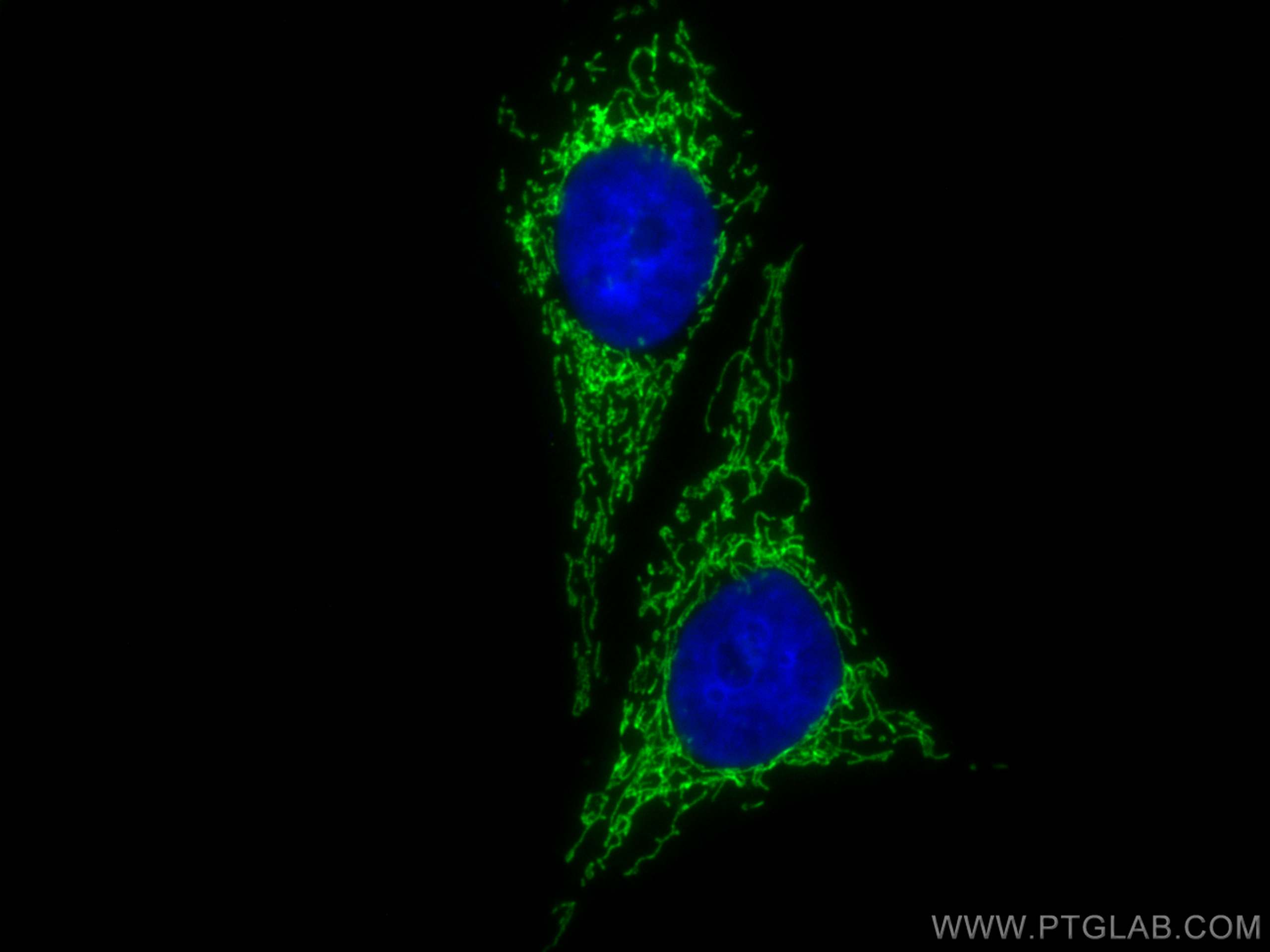验证数据展示
经过测试的应用
| Positive IF/ICC detected in | HepG2 cells |
推荐稀释比
| 应用 | 推荐稀释比 |
|---|---|
| Immunofluorescence (IF)/ICC | IF/ICC : 1:50-1:500 |
| It is recommended that this reagent should be titrated in each testing system to obtain optimal results. | |
| Sample-dependent, Check data in validation data gallery. | |
产品信息
CL488-12067 targets ATPIF1 in IF/ICC applications and shows reactivity with human samples.
| 经测试应用 | IF/ICC Application Description |
| 经测试反应性 | human |
| 免疫原 | ATPIF1 fusion protein Ag2704 种属同源性预测 |
| 宿主/亚型 | Rabbit / IgG |
| 抗体类别 | Polyclonal |
| 产品类型 | Antibody |
| 全称 | ATPase inhibitory factor 1 |
| 别名 | ATPase inhibitory factor 1, ATPI, ATPIF1, ATPIP, IF(1), IF1, Inhibitor of F(1)F(o) ATPase, IP |
| 计算分子量 | 106 aa, 12 kDa |
| 观测分子量 | 12 kDa |
| GenBank蛋白编号 | BC009677 |
| 基因名称 | ATPIF1 |
| Gene ID (NCBI) | 93974 |
| RRID | AB_3083916 |
| 偶联类型 | CoraLite® Plus 488 Fluorescent Dye |
| 最大激发/发射波长 | 493 nm / 522 nm |
| 形式 | Liquid |
| 纯化方式 | Antigen affinity purification |
| UNIPROT ID | Q9UII2 |
| 储存缓冲液 | PBS with 50% glycerol, 0.05% Proclin300, 0.5% BSA , pH 7.3 |
| 储存条件 | Store at -20°C. Avoid exposure to light. Stable for one year after shipment. Aliquoting is unnecessary for -20oC storage. |
背景介绍
The H(+)-ATP synthase is a reversible engine of mitochondria that synthesizes or hydrolyzes ATP upon changes in cell physiology. ATP synthase dysfunction is involved in the onset and progression of diverse human pathologies. ATPIF1 gene encodes mitochondrial ATPase Inhibitory Factor 1 (IF1), also named ATPI, ATPIP or IP. Endogenous IF1 limits ATP depletion when the mitochondrial membrane potential falls below a threshold and the ATP synthase starts hydrolyzing ATP to pump protons out of the mitochondrial matrix. Mitochondrial content of IF1 controls the activity of oxidative phosphorylation mediating the shift of cancer cells to an enhanced aerobic glycolysis, thus supporting an oncogenic role of IF1 in cancer.
实验方案
| Product Specific Protocols | |
|---|---|
| IF protocol for CL Plus 488 ATPIF1 antibody CL488-12067 | Download protocol |
| Standard Protocols | |
|---|---|
| Click here to view our Standard Protocols |
